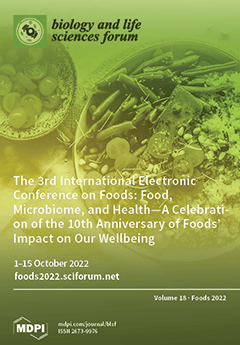Currently, the consumption of natural extracts from medicinal plants and fruits present in nature, and the discovery of the many benefits and positive impacts on the human body connected to their intake have favored and promoted research in the field of extraction. For this purpose, in recent years, the extracts of plant parts (leaves, branches, seeds, stem, roots, fruits, etc.) of the genus of
Asteriscus,
Atriplex,
Haloxylon,
Ruta,
Ficus,
Olea, and
Zizyphus have been investigated for their several biological properties and therapeutic activities including those as an antioxidant, antitumoral, antiproliferative, hepatoprotective, and antimicrobial. The shortcoming of using conventional methods, such as maceration, Soxhlet solvent extraction, and pressurized hot water, has promoted the development of novel, efficient, economical, and safe extraction techniques to recover the bioactive compounds without losing their quality and properties. Innovative methodologies, such as supercritical fluid technology and pulsed electric field-assisted extraction, have been proposed as sustainable methodologies to isolate nutraceuticals and pharmaceuticals from natural matrices, such as herbs, spices, and aromatic and medicinal plants. This study aimed to obtain extracts from fruits, leaves, and roots of
Ziziphus lotus by Supercritical Fluid Extraction (SFE, P = 25 MPa, T = 40 °C, Time = 60 min, Flow = 10 mL/min, Solvent = 90 CO
2:10 Ethanol) and Pulsed Electric Field (PEF, E = 3 kV/cm, Ws = 100 kJ/kg, Solvent = water, followed by 60 min of agitation) assisted extraction and characterize the extracts in terms of total antioxidant capacity (Oxygen Radical Absorbance Capacity (ORAC) and Total Equivalent Antioxidant Capacity (TEAC)), total phenolics, chlorophyll, and carotenoids content. PEF extracts presented an interesting content of total phenolic compounds (TPC): Fruits: 14.8 ± 0.1; Leaves: 31.1 ± 1.8; Roots: 28.8 ± 1.7 mg GAE/g DW. On the other hand, the concentration of TPC in SFE extracts was: Fruits: 5.91 ± 0.2; Leaves: 1.184 ± 0.2; Roots: 5.72 ± 0.8 mg GAE/g DW. Total chlorophyll content (TCC) was: Fruits: 366 ± 1; Leaves: 471 ± 12; Roots: 192 ± 16 mg/g DW in the case of PEF extracts and 5.0 ± 0.3; 97 ± 1; 8.5 ± 0.1 mg/g DW, respectively, in the case of SFE. Finally, the content of carotenoids was 128.0 ± 0.5; 62 ± 1; 169 ± 1 mg/g DW for PEF-extracted fruits, leaves, and roots, respectively, and 5.92 ± 0.04; 19.76 ± 0.02; 4.97 ± 0.04 mg/g DW for SFE extracted fruits, leaves, and roots, respectively. PEF-assisted extraction allowed the recovery of more phenolics, chlorophyll, and carotenoid compounds than SFE. The TEAC was higher for PEF extracts but ORAC was higher for SFE extracts. This could be related to the different polarities of the solvent used for extraction in each technique. Green extraction methodologies represent an efficient and safe extraction technique to recover bioactive compounds without losing their quality and properties.
Full article



